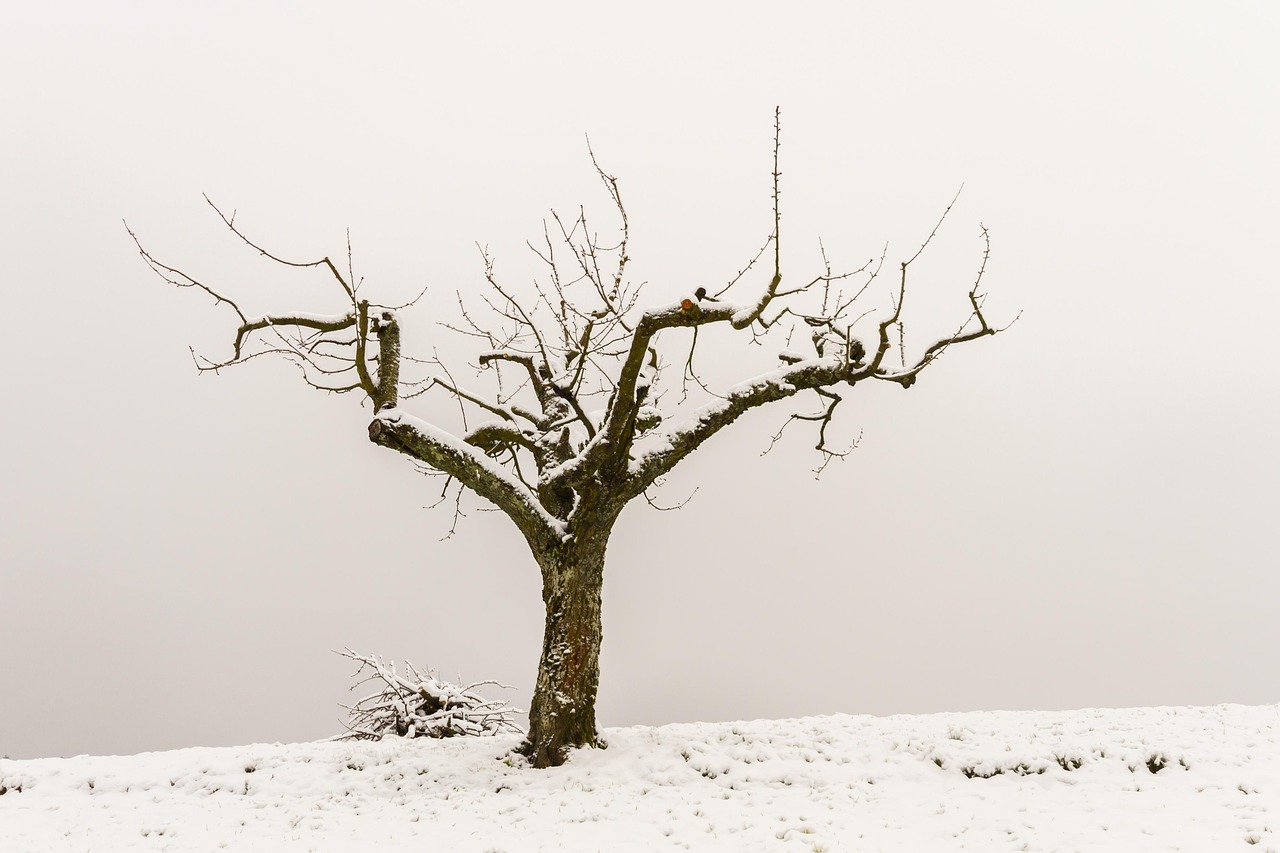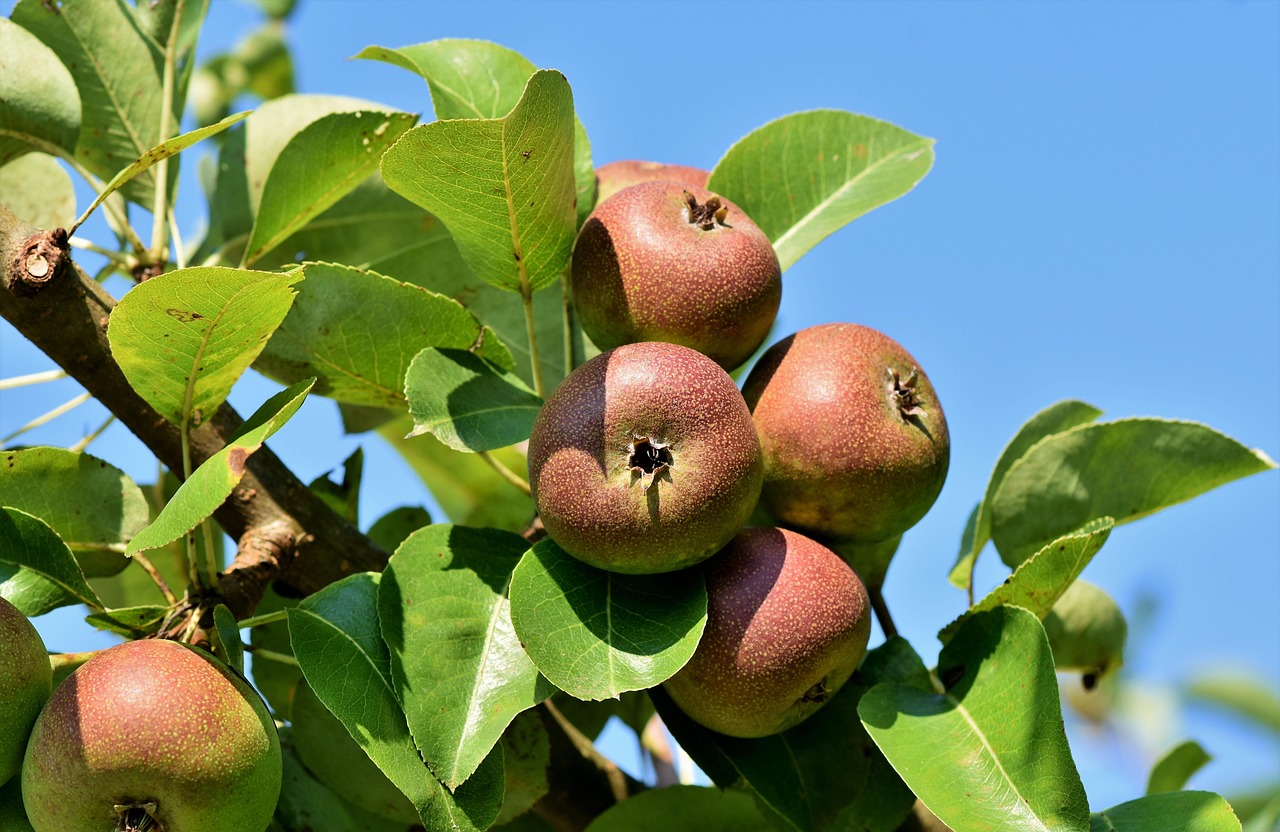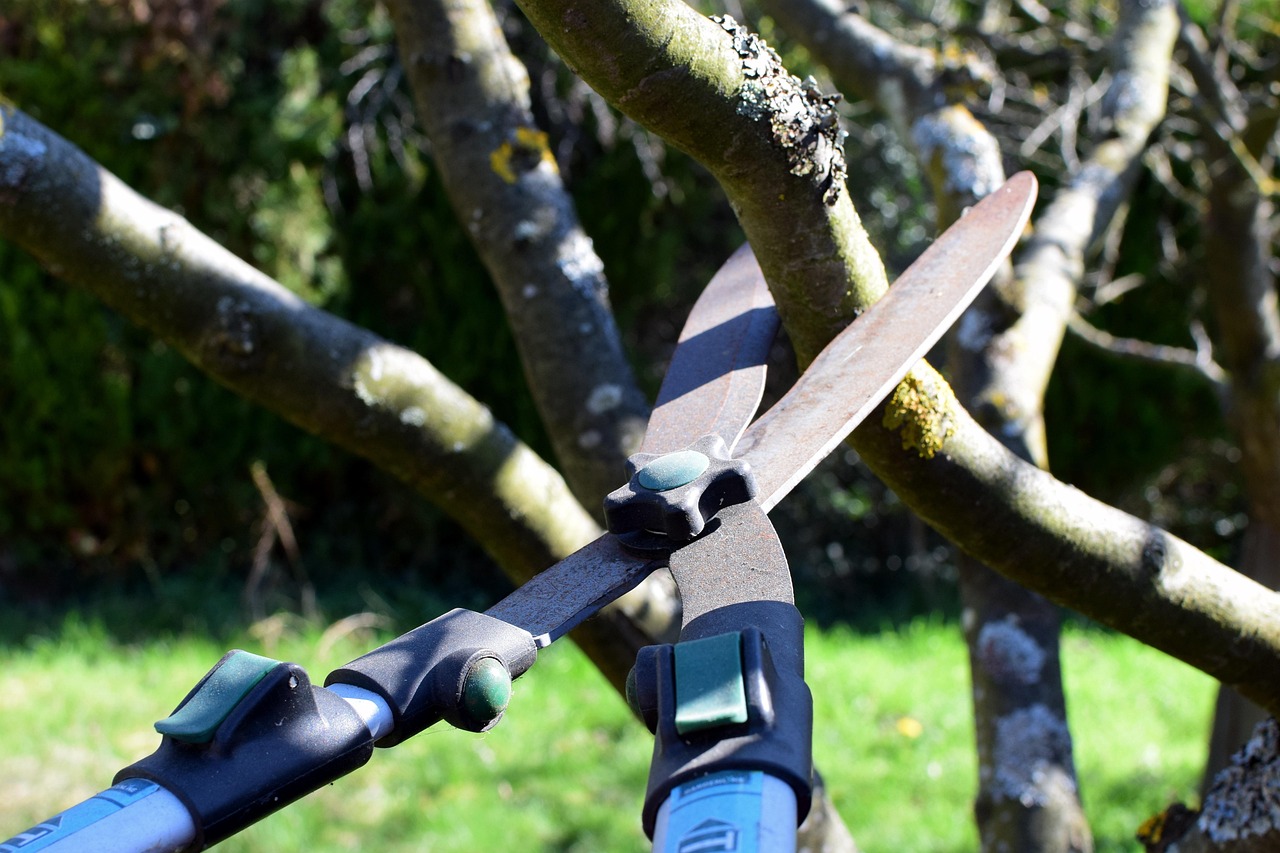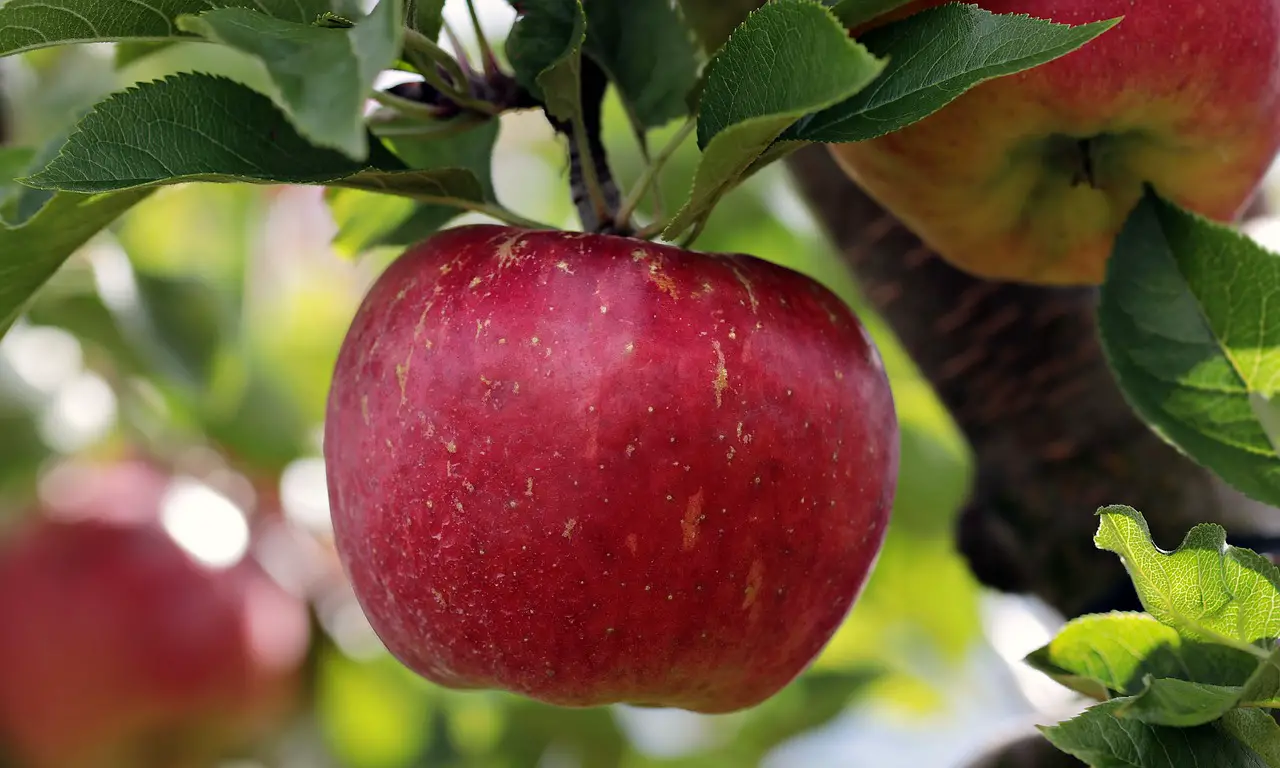Pruning apple trees is essential for optimal fruit production. Proper pruning enhances tree health, improves air circulation, and encourages fruiting. By following effective techniques, you can increase yield and maintain a manageable tree size.
Apple trees are a popular choice among home gardeners and commercial growers alike. They offer delicious fruit and beautiful blossoms in spring. However, to achieve a bountiful harvest, regular pruning is crucial. Pruning helps shape the tree, removes dead or diseased wood, and promotes new growth. Understanding when and how to prune your apple tree can make a significant difference in its productivity.

There are various types of pruning techniques, including thinning, heading, and rejuvenation. Each method serves a specific purpose in the overall health and productivity of the tree. Timing is also essential for effective pruning. Most apple trees benefit from pruning during the dormant season, typically late winter to early spring. However, some techniques may be applied during the growing season as well.
Benefits of Pruning Apple Trees
Pruning offers several benefits that contribute to the overall health and productivity of apple trees. Here are some key advantages:
- Improved Air Circulation: Pruning opens up the canopy, allowing sunlight to reach all parts of the tree. This helps reduce humidity levels, which can lead to fungal diseases.
- Increased Fruit Quality: By removing excessive branches, the tree can focus its energy on producing fewer but larger, high-quality fruits.
- Enhanced Tree Structure: Properly pruned trees develop a strong structure, making them less susceptible to wind damage.
- Encouraged New Growth: Pruning stimulates new shoots, which are essential for fruit production in the upcoming seasons.
Moreover, pruning can help manage the size of the tree. This is particularly important for home gardeners who may have limited space. Keeping the tree at a manageable height allows for easier harvesting and maintenance.

When to Prune Apple Trees
The timing of pruning is critical for achieving the best results. Generally, apple trees should be pruned during their dormant period, which occurs in late winter or early spring before new growth begins. The lack of leaves during this time makes it easier to see the structure of the tree and identify branches that need to be removed.
However, light pruning can also be performed during the growing season. This includes removing any dead or damaged branches as soon as they are noticed. Summer pruning can help control the size of the tree and improve light penetration into the canopy.
Essential Pruning Techniques
There are several key techniques to consider when pruning apple trees. Understanding these methods will help you make informed decisions about how to care for your trees effectively.

| Technique | Description |
|---|---|
| Thinning | This involves selectively removing branches to reduce overcrowding. It allows light to penetrate better and air to circulate within the tree. |
| Heading | This technique involves cutting back a portion of a branch to encourage bushier growth. It helps control the height of the tree and promotes new fruiting spurs. |
| Rejuvenation | This is used for older trees that have become unproductive. It involves a more severe pruning approach to encourage new growth and restore vitality. |
Each technique has its specific application depending on the age of the tree and its overall health. For young trees, heading may be beneficial to establish a strong framework early on. For mature trees, thinning may be more appropriate to enhance fruit production.
Before starting any pruning activity, it’s advisable to gather the right tools. Essential tools include sharp pruning shears, loppers for thicker branches, and a pruning saw for larger cuts. Maintaining sharp tools ensures clean cuts, which reduces stress on the tree and minimizes the risk of disease.
In conclusion, understanding the importance of pruning is vital for anyone looking to grow healthy apple trees with abundant fruit. By employing proper techniques and timing your efforts correctly, you can ensure your apple trees thrive and produce delicious fruits for years to come.

Common Mistakes in Pruning Apple Trees
While pruning is essential, many gardeners make common mistakes that can harm their apple trees. Understanding these pitfalls can help you avoid them and ensure healthy growth and fruit production.
- Over-Pruning: Removing too many branches can stress the tree. This may lead to reduced fruit production and poor overall health.
- Ignoring Tree Structure: Failing to consider the tree’s natural shape can result in weak limbs. It’s vital to maintain a balanced structure for strength and stability.
- Pruning at the Wrong Time: Cutting branches during the active growing season can hinder growth. The best time is during dormancy when the tree is least stressed.
- Using Dull Tools: Dull tools create ragged cuts, increasing the risk of disease. Always use sharp, clean tools for precise cuts.
- Neglecting Disease Management: Not addressing diseased or damaged branches can lead to further issues. Regular checks are essential for maintaining tree health.
Tools and Equipment for Pruning
Having the right tools is crucial for effective pruning. Each tool serves a specific purpose, making it easier to care for your apple trees. Here is a list of essential tools:
- Pruning Shears: Ideal for small branches and precise cuts. Look for bypass shears for clean cuts.
- Loppers: Useful for cutting thicker branches. They provide more leverage than shears.
- Pruning Saw: Best for larger branches that cannot be cut with shears or loppers.
- Hand Saw: A smaller saw that can be useful for minor adjustments and smaller cuts.
- Safety Gear: Always wear gloves and protective eyewear to prevent injuries while pruning.
Steps for Pruning Apple Trees
To ensure effective pruning, follow these steps systematically. Each step plays a role in enhancing the health and productivity of your apple trees.
- Assess the Tree: Before you start, examine your tree. Look for dead, diseased, or crossed branches that need attention.
- Remove Dead or Diseased Wood: Start by cutting away any dead or diseased branches. This prevents the spread of disease and encourages new growth.
- Thin Out the Canopy: Remove excess growth to improve air circulation. Focus on crowded areas where branches cross each other.
- Shape the Tree: Trim branches to maintain the desired shape. Aim for a balanced structure with an open center to allow sunlight to reach all parts of the tree.
- Make Clean Cuts: Use sharp tools to make clean cuts at a slight angle. This helps with healing and reduces the chance of disease.
- Clean Up: After pruning, gather all pruned material and dispose of it properly. Do not leave diseased wood near the tree.
Understanding Apple Tree Growth Habits
To prune effectively, it is essential to understand how apple trees grow. Apple trees typically exhibit two types of growth: vegetative growth and fruiting growth. Each type has different implications for pruning.
Vegetative Growth
This type of growth refers to the development of leaves and new shoots. It usually occurs in spring and summer as the tree prepares for fruit production. Pruning during this phase can help control excessive vegetative growth, which can detract from fruiting potential.
Fruiting Growth
This type of growth involves the formation of flowers and fruit. Proper pruning encourages fruiting spurs, which are short branches where fruit develops. It is essential to leave enough healthy spurs during pruning to ensure a good harvest.
Seasonal Considerations in Pruning
The seasons play a crucial role in determining when and how you should prune your apple trees. Understanding seasonal variations can help you make informed decisions about your pruning schedule.
| Season | Pruning Focus |
|---|---|
| Winter | This is the ideal time for major pruning tasks. Focus on shaping and thinning to encourage healthy growth in spring. |
| Spring | Light pruning may be done as new growth begins. Remove any dead or damaged wood as needed. |
| Summer | This is a good time for minor adjustments. Remove suckers and watersprouts to maintain tree shape. |
| Fall | Avoid heavy pruning in fall as it can stimulate new growth that may not harden off before winter. |
A well-timed pruning schedule considers these seasonal factors to maximize the benefits of each stage of growth. By aligning your pruning efforts with seasonal changes, you can support your apple trees’ health and productivity effectively.
Pruning Techniques for Different Apple Varieties
Different apple varieties may require specific pruning techniques to maximize their productivity. Understanding the unique characteristics of each variety can help you tailor your approach for optimal results. Below are some common apple types and their corresponding pruning needs.
Standard Apple Trees
Standard apple trees are larger and may require extensive pruning to ensure a good structure and fruit production. These trees typically benefit from:
- Open Center Pruning: This technique allows sunlight to penetrate the center of the tree, promoting healthy growth and fruiting.
- Annual Thinning: Regularly removing excess branches keeps the tree manageable and encourages larger fruit development.
Dwarf Apple Trees
Dwarf apple trees are smaller and often easier to manage. Pruning for these varieties focuses on:
- Maintaining Height: Limit the height of dwarf trees to facilitate easy harvesting. This may involve regular heading cuts.
- Encouraging Fruit Production: Focus on maintaining fruiting spurs and cutting back overly vigorous growth that may overshadow them.
Columnar Apple Trees
Columnar apple trees grow in a narrow, upright form. Pruning these trees involves:
- Minimal Pruning: Due to their shape, these trees require less pruning than others. Focus on removing any dead or crossing branches.
- Promoting Upright Growth: Trim any branches that grow outward to maintain their columnar shape.
Understanding Fruit Buds
Identifying fruit buds is crucial for effective pruning. Apple trees produce different types of buds, including vegetative and fruiting buds. Understanding these differences will guide your pruning decisions.
Fruiting Buds
Fruiting buds are typically found on spurs or short shoots. They are usually plump and round, indicating potential fruit production. When pruning, it is essential to:
- Preserve Fruiting Buds: Always aim to keep a good number of these buds on the tree. Removing too many can lead to a poor harvest.
- Encourage New Fruit Spurs: When cutting back branches, focus on creating new spurs that can produce fruit in future seasons.
Vegetative Buds
Vegetative buds are elongated and pointy, designed for producing leaves and new growth. While these buds are essential for the tree’s overall health, they should be managed carefully. Consider the following:
- Avoid Overgrowth: Excessive vegetative growth can overshadow fruiting buds. Regular thinning helps maintain a balance between vegetative and fruiting growth.
- Direct Energy Towards Fruiting: Prune back overly vigorous shoots to redirect energy towards developing fruit.
The Role of Renewal Pruning
Renewal pruning is a technique used primarily on mature apple trees that have become unproductive. This method aims to rejuvenate the tree and restore its ability to produce fruit effectively. The process involves significant cuts to encourage new growth.
When to Implement Renewal Pruning
This technique is best applied during the dormant season. Implement renewal pruning when you notice:
- Poor Fruit Production: If your tree has not produced satisfactorily over several seasons, consider this technique.
- Weak or Spindly Growth: Trees that have become thin or weak may benefit from a more severe pruning approach to stimulate new, robust growth.
Steps for Renewal Pruning
To effectively carry out renewal pruning, follow these steps:
- Assess the Tree: Identify branches that show little or no growth and those that are more than three years old.
- Select Branches to Cut: Target older branches for removal while ensuring there are enough new shoots remaining for fruit production.
- Make Clean Cuts: Use sharp tools to create clean cuts at an angle, which will help minimize stress on the tree.
- Monitor New Growth: After pruning, observe new growth in the following season. Adjust your care based on how well the tree responds.
Pest and Disease Considerations During Pruning
Pest and disease management is an essential aspect of apple tree care, particularly during pruning. Proper techniques can reduce the risk of spreading diseases and pests.
Common Pests
Pests such as aphids, spider mites, and codling moths can harm apple trees. To minimize their impact:
- Inspect Tools: Ensure tools are clean before pruning. This prevents the spread of pests from one tree to another.
- Remove Infected Wood: If you notice signs of pest infestation, remove affected branches immediately.
Disease Management
Diseases like fire blight and apple scab can affect tree health. To combat these issues:
- Prune During Dry Weather: Wet conditions can facilitate the spread of diseases. Avoid pruning during rainy periods.
- Treat Wounds: Consider using wound dressings on larger cuts to prevent infection.
By integrating pest and disease considerations into your pruning routine, you can help ensure your apple trees remain healthy and productive for years to come.
Advanced Techniques for Pruning Apple Trees
As you become more experienced in pruning apple trees, you may want to explore advanced techniques that can further enhance tree health and fruit production. These methods require a deeper understanding of tree biology but can yield significant benefits.
Espalier Pruning
Espalier is a technique used to train apple trees to grow flat against a wall or trellis. This method maximizes space and allows for greater exposure to sunlight. To successfully espalier your apple tree, follow these steps:
- Select a Suitable Variety: Choose a variety that responds well to espaliering, such as dwarf or semi-dwarf trees.
- Choose the Right Location: Ensure the site receives full sun and has good drainage.
- Start Early: Begin training the tree while it is young. Use ties to secure branches against the support structure.
- Regularly Prune: Maintain the desired shape by regularly pruning excess growth and encouraging lateral branching.
Crown Reduction
Crown reduction is a technique used to reduce the overall height of a mature apple tree. This method can make harvesting easier and improve light penetration. To perform crown reduction:
- Identify the Leader: Select the central leader to be retained, and choose the branches that will remain for future growth.
- Make Strategic Cuts: Cut back the main branches to lateral branches that are at least one-third the diameter of the removed limb.
- Monitor Growth: After crown reduction, monitor new growth and adjust future pruning accordingly to maintain the desired shape.
Thinning Cuts vs. Heading Cuts
Understanding the difference between thinning cuts and heading cuts is essential for effective pruning. Each serves a different purpose and can influence tree growth in various ways.
- Thinning Cuts: These involve removing entire branches or shoots back to their point of origin. Thinning encourages better air circulation and sunlight penetration, leading to healthier fruiting.
- Heading Cuts: These involve cutting back a branch to a shorter length, which stimulates new growth. However, excessive heading cuts can lead to crowded branches and increased vegetative growth.
Incorporating both types of cuts in your pruning strategy can help achieve a balance between fruit production and tree health.
Fertilization and Watering Considerations
Effective pruning goes hand in hand with proper fertilization and watering practices. Understanding how to care for your apple trees after pruning can significantly impact their health and productivity.
Fertilization After Pruning
After pruning, apple trees may benefit from additional nutrients. Consider these tips for fertilization:
- Use Balanced Fertilizers: A balanced fertilizer with equal parts nitrogen, phosphorus, and potassium will support overall tree health.
- Avoid Over-Fertilization: Too much fertilizer can lead to excessive vegetative growth at the expense of fruit production. Follow recommended application rates based on soil tests.
- Add Organic Matter: Incorporating compost or well-rotted manure can improve soil structure and provide essential nutrients.
Watering Practices
Proper watering is crucial following pruning. Newly pruned trees may experience stress, so ensuring they receive adequate moisture is essential. Keep these points in mind:
- Water Deeply: Watering deeply encourages deep root growth. Use a soaker hose or drip irrigation for efficient watering.
- Avoid Overwatering: Ensure proper drainage to prevent root rot. Monitor soil moisture levels regularly.
- Mulching: Adding mulch around the base of the tree can help retain moisture and suppress weeds.
Final Thoughts
Pruning apple trees is an art that requires knowledge, patience, and practice. By understanding the various techniques, seasonal considerations, and specific needs of different apple varieties, you can significantly enhance your fruit production. Remember that regular maintenance, including monitoring for pests and diseases, is crucial for maintaining healthy trees.
Your approach to pruning should evolve as your trees grow and change. Ultimately, successful apple tree pruning combines technique with a deep understanding of each tree’s unique characteristics. With time and experience, you will be able to cultivate thriving apple trees that produce abundant, delicious fruit year after year.
Your journey into the world of apple tree care can be rewarding. By following this guide, you are well on your way to becoming an expert in pruning and caring for your apple trees, ensuring they remain healthy and productive for many seasons to come.
